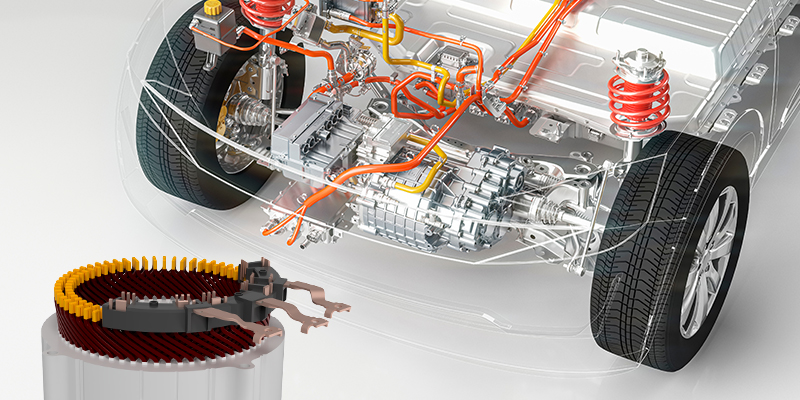The emergence of electric vehicles (EVs) is changing the automotive sector and pushing automakers to improve the economy and performance of their powertrains. Stator winding technology, a key component of electric motors, has seen major advancements. These innovations are making EVs more powerful, efficient, and reliable.
Stator Winding: A Vital Component for EV Motors
The electric motor stator is a key component that converts electrical energy into mechanical motion to drive an electric vehicle. It consists of copper wire coils wound around the stator, with the rotor spinning inside to generate magnetic fields essential for motor operation.A vehicle’s total efficiency and motor performance are greatly influenced by the stator winding’s design and quality.
Advancements in stator winding technology have primarily focused on improving the materials, methods, and precision of the winding process. These improvements result in motors that can deliver higher power outputs while maintaining optimal efficiency and reducing energy losses.
Precision Winding for Enhanced Efficiency
One of the most significant developments in stator winding is the adoption of precision winding techniques. Traditional winding methods involved manual processes that often resulted in uneven winding, leading to inefficiencies in the motor’s performance. Modern technologies, such as automatic and robotic winding systems, have enabled a much higher degree of precision in the winding process.
These advanced winding machines can produce uniform and tightly wound coils, which enhances the overall efficiency of the stator. With a higher quality winding process, electric motors experience less energy loss due to improved conductor integrity and a better alignment of magnetic fields. In order to maintain peak performance and increase the motor’s lifespan, this translates into increased overall efficiency and decreased heat generation.
Improved Materials for Greater Power Density
Another innovation in stator winding technology is the use of advanced materials.Copper wire has long been the preferred material for winding because of its excellent conductivity. However, newer materials, such as flat copper wire and high-performance alloys, are being increasingly used to boost the power density of the motor.
Flat copper wire, for example, is more compact and can pack more material into the same space, increasing the motor’s power output without increasing its size. This innovation allows for more power-efficient motors, which is especially important for EVs, as it helps to reduce the overall weight of the vehicle without sacrificing performance.
The Role of Cooling in Stator Winding
As electric motors in EVs are pushed to deliver higher outputs, the need for effective cooling has become increasingly important. Advanced stator winding designs now include cooling channels integrated directly into the winding, allowing for better heat dissipation during operation. This enhanced thermal control aids in avoiding overheating, which could otherwise lower performance and shorten the motor’s life.
Furthermore, the integration of cooling technologies ensures that motors can operate at peak efficiency, even under heavy load conditions, such as during high-speed driving or acceleration. By maintaining optimal operating temperatures, manufacturers can ensure that the electric motors in their vehicles can perform reliably over extended periods.
The Impact on Electric Vehicle Performance
The improvements in stator winding technology are directly influencing the performance of electric vehicles. With motors that are more power-dense and efficient, EVs are able to achieve higher ranges on a single charge while maintaining a compact size. This allows automakers to design electric vehicles that are lighter and more energy-efficient, enhancing their overall performance and driving experience.
Additionally, the increased power output achieved through advanced stator winding technology enables EVs to accelerate more quickly and provide better handling in various driving conditions. As a result, consumers are able to enjoy a more dynamic driving experience with electric vehicles, which has been one of the main barriers to EV adoption in the past.
Challenges and Future Developments
Despite advancements in stator winding technology, challenges remain. Further advancements in motor design and winding processes are required to meet the demands of EVs for improved performance and longer battery life.
One promising area is superconducting materials, which could greatly improve efficiency. However, high costs and cooling requirements pose obstacles. Researchers are working on cost-effective, scalable superconducting motors that could transform EV performance.
Sustainable manufacturing is another challenge. As EV adoption grows, the demand for quality stator windings rises. Gator Lamination focuses on using eco-friendly materials with minimal environmental impact, ensuring high-performance solutions for the evolving EV industry.
Conclusion
Advanced stator winding technology is key to improving electric vehicle performance. Precision winding, high-performance materials, and better cooling boost motor efficiency and power. These advancements make EVs more reliable and efficient while tackling industry challenges.

